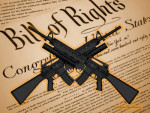Diversion pleas qualify as convictions under federal background check law
The federal Fair Credit Reporting Act (FCRA) prohibits companies engaged in criminal background screening from reporting records of arrests that are more than seven years old. But since the 1990’s, there has been no time limit on reporting “records of convictions of crimes.” See 15 U.S.C. § 1681c(a)(2) and (5). It might reasonably be assumed that criminal cases terminated in favor of the accused without a conviction (such as uncharged arrests, acquittals and dismissed charges) would fall into the first category, and so would not be reportable after seven years. But we were recently alerted to a decision of the 7th Circuit from April that defined the term “conviction” in FCRA broadly to include any disposition involving a guilty plea, even if the charges are dismissed pursuant to a diversionary program with no resulting conviction under state law.
In Aldaco v. Rentgrow, a background screening company reported to Rafaela Aldaco’s prospective landlord that she had pleaded guilty to a battery charge twenty years earlier. As a result, the landlord rejected Aldaco’s rental application. Aldaco conceded her guilty plea, but pointed out that the court had deferred proceedings while she successfully completed a brief supervision sentence, after which the court had dismissed the battery charge without a judgment of conviction under Illinois law. She sued the background screener, arguing that reporting her dated non-conviction disposition violated FCRA’s seven-year bar.
The court of appeals ruled against Aldaco, holding that the term “conviction” in FCRA must be defined by federal rather than state law, and that a guilty plea is all it takes to convert a state non-conviction disposition into one that qualifies as a conviction under federal law. The leading Supreme Court case in this area is Dickerson v. New Banner Institute, 460 U.S. 103 (1983), which held that an Iowa man whose charges had been diverted and expunged after a guilty plea nonetheless had a “conviction” for purposes of the federal felon-in-possession law. (Congress later revised the federal firearms law to incorporate state relief mechanisms into that law’s definition of conviction. See 18 U.S.C. § 921(a)(20).) The term “conviction” in other federal laws has been similarly interpreted to include state non-conviction dispositions that include a guilty plea. See United States v. Gomez, 24 F.3d 924 (7th Cir. 1994)(“prior conviction” under § 841(b)(1) includes a plea to a probationary sentence that did not result in a final adjudication); Cleaton v. Department of Justice, 839 F.3d 1126, 1130 (Fed. Cir. 2016)(5 U.S.C. § 7371(b) requires that “[a]ny law enforcement officer who is convicted of a felony shall be removed from employment,” and this includes a guilty plea simpliciter); Harmon v. Teamsters Local 371, 832 F.2d 976 (7th Cir. 1987)(29 U.S.C. § 504(a) prohibits persons “convicted of” various felonies from serving as an officer, director, consultant, or in other leadership roles in labor organizations, and the term is defined by federal law and includes deferred judgments). These decisions suggest that absent a contrary indication from Congress, federal courts will count diversionary pleas as convictions under federal law, including FCRA.
Short of revising FCRA itself, it would appear that there are two ways to ensure that state non-conviction dispositions are not included in background checks as federal “convictions” after seven years. One is to eliminate the requirement of a guilty plea from diversionary dispositions. The U.S. Sentencing Guidelines show the way: the provisions on criminal history distinguish between “[d]iversion from the judicial process without a finding of guilt” which is not counted as part of an individual’s criminal history for sentencing purposes, and “a diversionary disposition resulting from a finding or admission of guilt, or a plea of nolo contendere” which counts toward criminal history. See U.S.S.G. § 4A1.2(f). Therefore, if states want their diversion programs to achieve their stated goals of avoiding convictions in appropriate cases, they should consider phasing out plea requirements.
The second way to avoid having a diversionary disposition reported as a conviction is to ensure that diversion includes sealing or expungement of the record. There is a growing body of caselaw interpreting FCRA’s requirements that data be both accurate and up to date to prohibit reporting sealed or expunged convictions. See Sharon Dietrich’s analysis of the issue for CCRC here. In fact, it appears that Aldaco herself may have been eligible to have her record expunged under Illinois law, though there is no indication that she sought this relief. While expungement probably would not have mattered to the federal court’s holding on the meaning of “conviction,” it might have given Aldaco an alternative FCRA ground for challenging the background screener’s report.
This post is part of a series for CCRC’s non-conviction records project, a study of the public availability and use of non-conviction records – including arrests that are never charged, charges that are dismissed, deferred dispositions, and acquittals.
Other posts in the series:
CCRC to hold roundtable on criminal records at U. Michigan Law School
Colorado limits immigration consequences of a criminal record
Survey of law enforcement access to sealed non-conviction records
Administration withdraws proposal to require federal job-seekers to disclose diversions
Iowa high court holds indigent attorney fees bar expungement
NY judge rules police need court order to access sealed arrests
CCRC opposes requiring federal job seekers to disclose some non-conviction records
CCRC launches major study of non-conviction records







 launch two years ago.
launch two years ago.